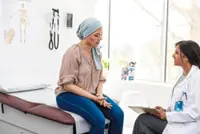Screening mammograms are the best way to find breast cancer early, when it is easier to treat and before it is big enough to feel or cause symptoms. — 123rf.com
Breast cancer screening awareness campaigns are multiplying around the world, as is research gauging people's knowledge on the subject.
One of the latest surveys reports that most breast cancer symptoms are still little-known to the general public, particularly in the United States, where three quarters of women don't believe they will get the disease.
Already a subscriber? Log in
Save 30% OFF The Star Digital Access
Cancel anytime. Ad-free. Unlimited access with perks.





